- Gardenia (Gardenia): Care, Photos, Species Everything You Need to Know
- Introduction
- Care Tips
- Photos
- Species
- Conclusion
- The Beauty of Gardenia
- Gardenia Care Tips
- Gardenia Planting Guide
- Gardenia Watering and Fertilizing
- Watering
- Fertilizing
- Common Gardenia Diseases
- Root Rot
- Powdery Mildew
- Leaf Spot
- Black Sooty Mold
- Gardenia Varieties and Species
- Gardenia Pruning Techniques
- 1. Timing
- 2. Tools
- 3. Removing Dead or Diseased Wood
- 4. Shaping and Size Control
- 5. Pinching and Tipping
- 6. Fading Flowers
- 7. Aftercare
- 8. Additional Tips
- Gardenia Propagation Methods
- Q&A:
- How often should I water my gardenia plant?
- What is the best soil for gardenia plants?
- How do I propagate gardenia plants?
- What are some common problems that gardenia plants face?
- Can gardenia plants be grown indoors?
- Video: ALL ABOUT GARDENIAS – Details about different varieties and how to grow Gardenias
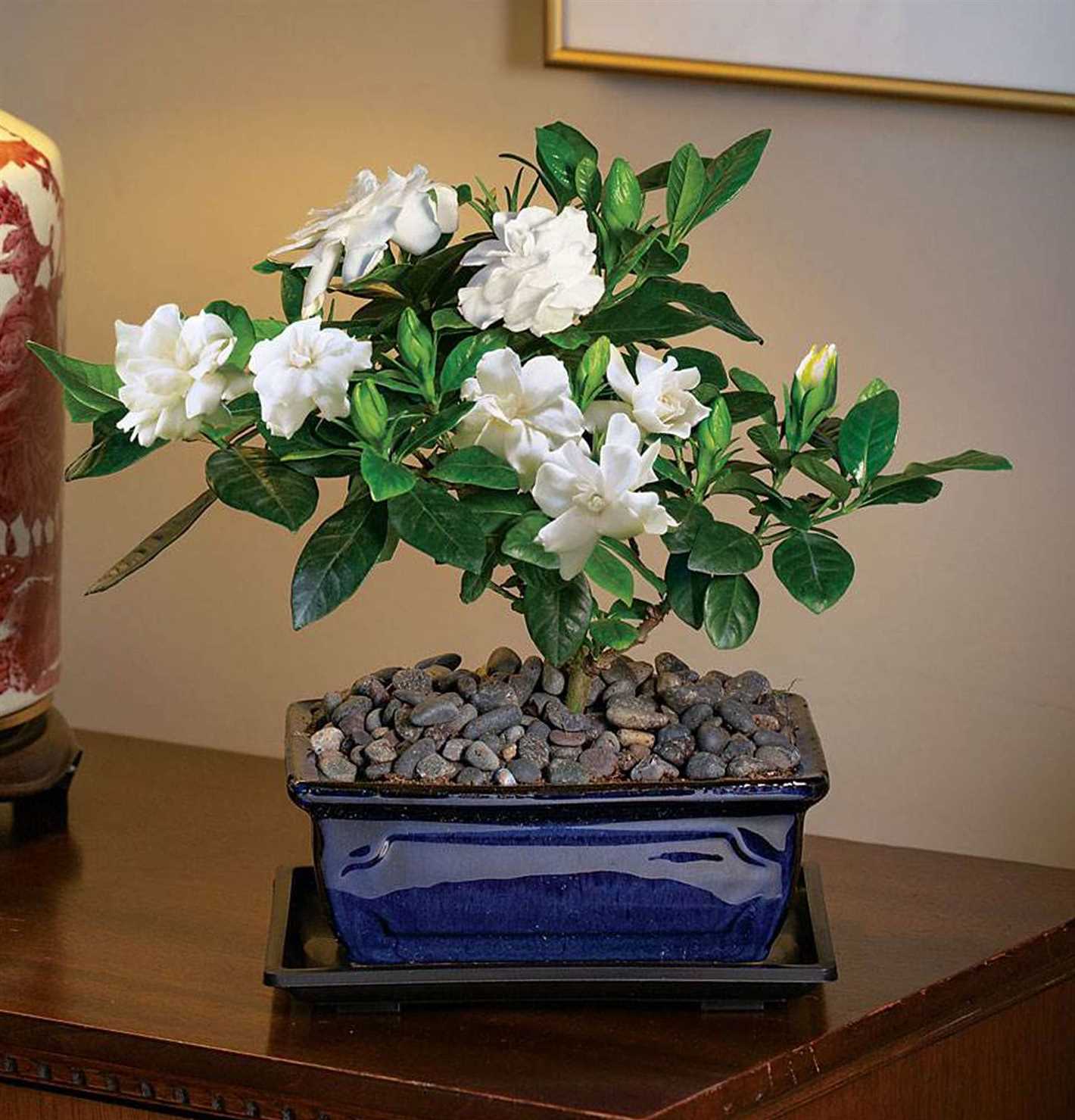
Gardenia, also known by its scientific name Gardenia, is a flowering plant that belongs to the Rubiaceae family. It is native to the tropical and subtropical regions of Africa, Asia, and the Pacific Islands. Known for its fragrant and beautiful flowers, Gardenia is a popular choice for gardens, parks, and indoor plant collections.
The Gardenia plant has glossy, dark green leaves and produces large, white or pale yellow flowers with a strong and sweet scent. The flowers typically have a whorl-like arrangement and can bloom from spring to summer. Some varieties may also produce flowers in the winter months.
Gardenias require specific care to thrive and produce their signature flowers. They prefer well-draining soil that is rich in organic matter and regular watering, although they can be sensitive to overwatering. These plants also require a humid environment and can benefit from misting or placing a tray of water nearby. Additionally, they prefer bright, indirect light and can be grown indoors or outdoors, depending on the climate.
There are several species and cultivars of Gardenia, each with its own unique characteristics. Some popular species include Gardenia jasminoides, Gardenia thunbergia, and Gardenia tubifera. Each species may vary in terms of flower size, color, and growth habit. Gardenia plants can also be propagated through cuttings or seeds, allowing for easy propagation and expansion of your Gardenia collection.
In this article, we will explore the care requirements for Gardenia plants, showcase stunning photos of Gardenia flowers, and provide information on different Gardenia species. Whether you are a seasoned gardener or a beginner plant enthusiast, this article has everything you need to know about Gardenia plants.
Gardenia (Gardenia): Care, Photos, Species Everything You Need to Know
Introduction
Gardenia is a popular and beloved flowering plant that is cherished for its fragrant blooms and glossy green leaves. It is native to tropical and subtropical regions and is often grown as an ornamental plant in gardens and indoor spaces. This article provides everything you need to know about caring for and cultivating gardenias, including care tips, photos, and information about different species.
Care Tips
Here are some important care tips to keep your gardenia plant healthy and blooming:
- Light: Gardenias thrive in bright but indirect light. They should be placed in a location with morning sun and afternoon shade.
- Temperature: These plants prefer warm temperatures between 65°F and 75°F (18°C-24°C). They are sensitive to cold drafts and frost.
- Watering: Gardenias require consistent moisture. Keep the soil evenly moist, but not soggy. Avoid overwatering, as it can cause root rot.
- Fertilizing: Use a balanced fertilizer formulated for acid-loving plants. Apply it according to the package instructions, typically every 2-4 weeks during the growing season.
- Pruning: Prune gardenias after they finish flowering to maintain their shape and promote new growth. Remove any dead or diseased branches.
Photos
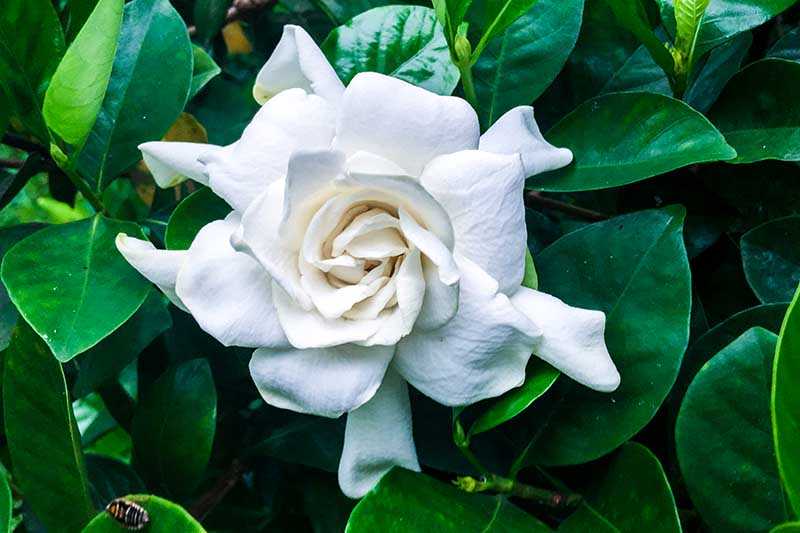

Here are some photos of beautiful gardenia plants to inspire you:
Species
There are many different species of gardenia, each with unique characteristics. Here are a few popular ones:
| Species | Description |
|---|---|
| Gardenia jasminoides | This is the most common species, known for its white, fragrant flowers. It is often grown as a houseplant or in gardens with mild climates. |
| Gardenia thunbergia | This species has yellow flowers and is native to South Africa. It is a more heat-tolerant variety and can be grown in hotter climates. |
| Gardenia tubifera | Also known as the Cape jasmine, this species has double white flowers and is native to India and Sri Lanka. |
These are just a few examples of the many beautiful gardenia species available. Each one has its own unique charm and growing requirements.
Conclusion
Gardenias are stunning plants that bring beauty and fragrance to any garden or indoor space. With the right care and attention, they can thrive and produce abundant blooms. Hopefully, this article has provided you with valuable information about caring for gardenias, as well as some inspiration to grow these lovely plants.
The Beauty of Gardenia
- Gardenia is a beautiful flowering plant that is native to tropical and subtropical regions of Asia, Africa, and the Pacific Islands.
- It is renowned for its exquisite blooms, which are large, white or creamy in color, and have a strong, sweet fragrance.
- The flowers of gardenia are often used in floral arrangements and for perfumery purposes.
- Gardenias are evergreen shrubs or small trees, with dark green, glossy leaves that create a lush and vibrant backdrop for the stunning blooms.
- There are over 200 species of gardenia, with some of the most popular ones being Gardenia jasminoides and Gardenia thunbergia.
- These plants are highly prized for their ornamental value and are commonly grown in gardens and as indoor houseplants.
Gardenias require specific care to thrive and produce their beautiful flowers. Here are some key points to consider:
- Light: Gardenias need bright, indirect light to grow well. They thrive in a location that receives morning sun and afternoon shade.
- Temperature: These plants prefer warm temperatures between 65 to 70 degrees Fahrenheit (18 to 21 degrees Celsius). They are sensitive to cold and should be protected from frost.
- Watering: Gardenias require regular watering to keep the soil evenly moist, but not waterlogged. They are sensitive to drought, so it’s important to maintain proper moisture levels.
- Fertilizer: Gardenias benefit from regular feeding with a balanced fertilizer formulated for acid-loving plants. This helps promote healthy growth and abundant blooms.
- Pruning: Pruning gardenias is important to maintain their shape and promote new growth. It’s best to prune them after flowering, removing any dead or overgrown branches.
In conclusion, the beauty of gardenia lies in its stunning blooms and intoxicating fragrance. With proper care and attention, these plants can thrive and bring a touch of elegance to any garden or indoor space.
Gardenia Care Tips
- Light: Gardenias need bright, indirect light to thrive. Place them near east or west-facing windows to ensure they receive adequate sunlight.
- Temperature: Gardenias prefer temperatures between 65-70°F (18-21°C). Avoid placing them near drafts or direct heat sources, as they are sensitive to temperature fluctuations.
- Watering: Keep the soil consistently moist but not waterlogged. Water thoroughly when the top inch of soil feels dry to the touch. Avoid overwatering, as it can lead to root rot.
- Humidity: Gardenias thrive in high humidity environments. Increase humidity by placing the plant on a tray filled with water and pebbles or by using a humidifier.
- Fertilization: Feed gardenias every 2-4 weeks during the growing season (spring and summer) with a fertilizer specifically formulated for acid-loving plants.
- Pruning: Prune gardenias after they finish blooming to maintain their shape and promote healthy growth. Remove dead or damaged branches and prune back any overgrown areas.
- Pests: Gardenias are susceptible to mealybugs, scale insects, and whiteflies. Regularly inspect the leaves for pests and treat infestations with insecticidal soap or neem oil.
- Container: If growing gardenias indoors, choose a container with drainage holes to prevent waterlogged soil. Use a well-draining potting mix specially formulated for acid-loving plants.
- Overwintering: Gardenias are not cold-hardy and should be brought indoors before the first frost. Keep them in a cool, bright room during winter months.
Gardenia Planting Guide
- Choose the right location: Gardenias prefer a location with full sun to light shade. They need at least 6 hours of direct sunlight per day.
- Prepare the soil: Gardenias prefer acidic soil with a pH range of 5.0 to 6.5. Amend the soil with organic matter, such as compost or peat moss, to improve drainage.
- Planting: Dig a hole that is two times wider and as deep as the root ball. Place the gardenia in the hole, making sure it is level with the surrounding soil. Backfill the hole with soil and firm it gently.
- Spacing: Space gardenias 3 to 6 feet apart to allow for proper air circulation and growth.
- Watering: Water the gardenia deeply after planting, and then water regularly to keep the soil evenly moist. Avoid overwatering, as gardenias are prone to root rot.
- Mulching: Apply a layer of mulch around the base of the gardenia to conserve moisture, suppress weeds, and maintain an even soil temperature.
- Fertilizing: Feed gardenias with a slow-release, acidic fertilizer in early spring and again in late summer. Follow the package instructions for application rates.
- Pruning: Prune gardenias after they finish blooming to remove dead or diseased branches and to shape the plant. Avoid heavy pruning, as this can reduce flowering.
- Protection: Gardenias are sensitive to cold temperatures, so provide them with protection during winter. Cover the plants with a frost cloth or move potted gardenias indoors.
- Pest and disease control: Keep an eye out for common pests and diseases, such as aphids, mealybugs, and powdery mildew. Treat any issues promptly with organic or chemical controls.
Following these guidelines will help you successfully plant and care for your gardenias, ensuring they thrive and produce beautiful fragrant blooms.
Gardenia Watering and Fertilizing
Gardenia plants require regular watering and fertilizing to keep them healthy and thriving. Proper watering and fertilizing practices can help promote the growth of beautiful flowers and lush foliage. Here are some tips for watering and fertilizing your gardenia:
Watering
- Ensure that the soil is moist but not waterlogged. Gardenias prefer well-draining soil, so overwatering can lead to root rot.
- Water the plants deeply and consistently. It’s better to water deeply once or twice a week rather than lightly every day.
- Water the plants at the base to avoid getting the foliage wet. Wet foliage can lead to fungal diseases.
- Use room temperature or slightly warm water for watering the gardenias. Avoid using cold water as it can shock the plants.
- During hot summer months, gardenias may require more frequent watering to compensate for increased evaporation.
Fertilizing
- Use a balanced fertilizer specifically formulated for acid-loving plants, such as an azalea or camellia fertilizer.
- Fertilize the gardenias in early spring, before the start of the growing season, and again in late spring or early summer.
- Follow the instructions on the fertilizer packaging for the correct dosage and application method.
- Avoid overfertilizing, as it can lead to salt buildup in the soil, which can harm the roots of the plants.
- Apply the fertilizer evenly around the base of the plants, taking care not to let it come into direct contact with the foliage.
- Water the plants thoroughly after fertilizing to help distribute the nutrients into the soil.
By following the proper watering and fertilizing practices, you can ensure the health and longevity of your gardenia plants, and enjoy their fragrant blooms for years to come.
Common Gardenia Diseases
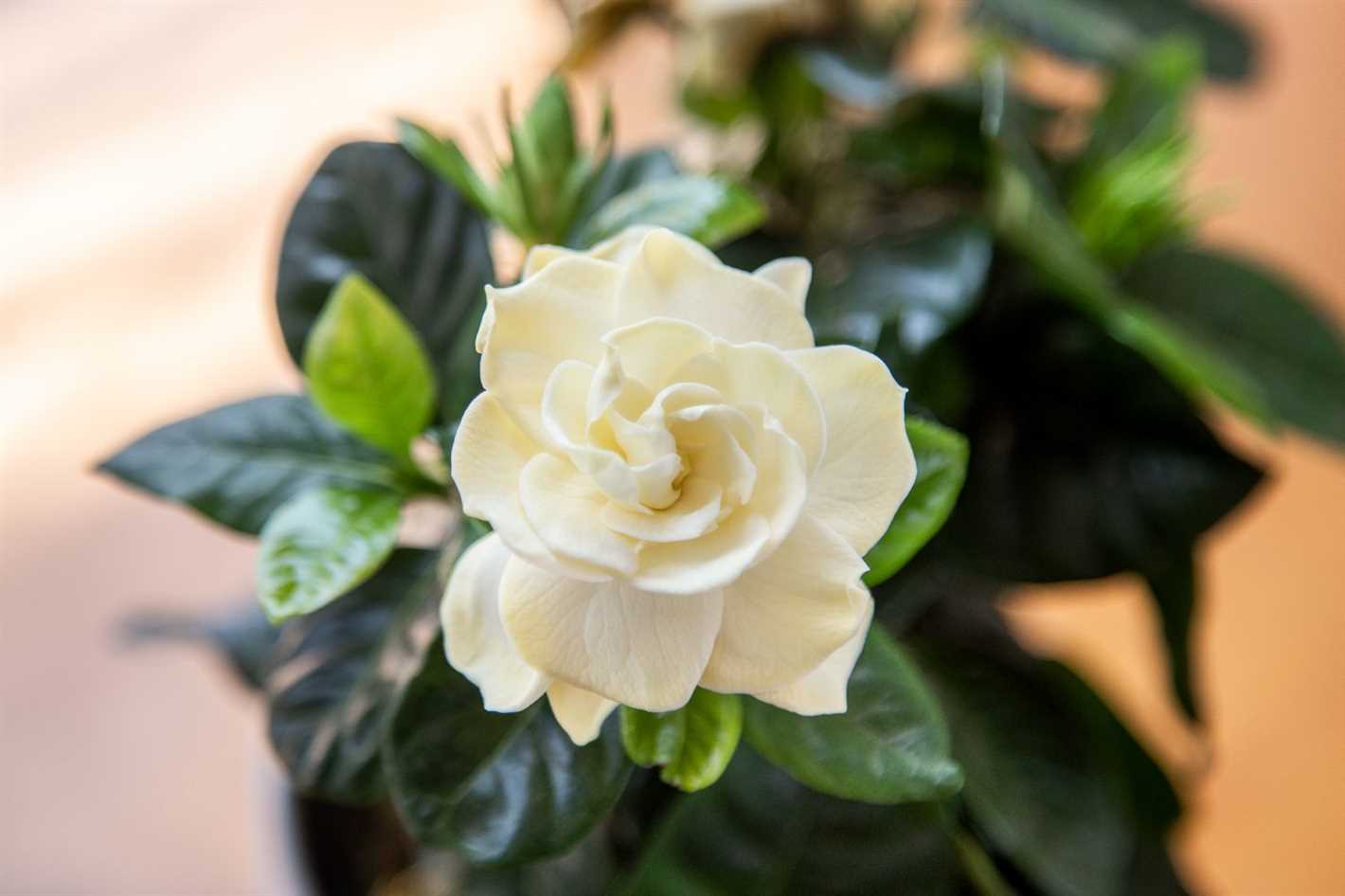

Root Rot
Root rot is a common disease that affects gardenias. It occurs when the roots of the plant are constantly wet, causing them to rot. This can be caused by overwatering or poorly draining soil. Signs of root rot include wilting leaves, yellowing foliage, and a foul odor. To prevent root rot, make sure to plant gardenias in well-draining soil and water them only when the top inch of soil is dry.
Powdery Mildew
Powdery mildew is a fungal disease that can affect gardenias. It appears as a white, powdery coating on the leaves, stems, and flowers of the plant. The affected areas may also become distorted or stunted in growth. Powdery mildew thrives in humid conditions, so it’s important to provide good air circulation around the plant and avoid overhead watering. Fungicides can also be used to treat powdery mildew if necessary.
Leaf Spot

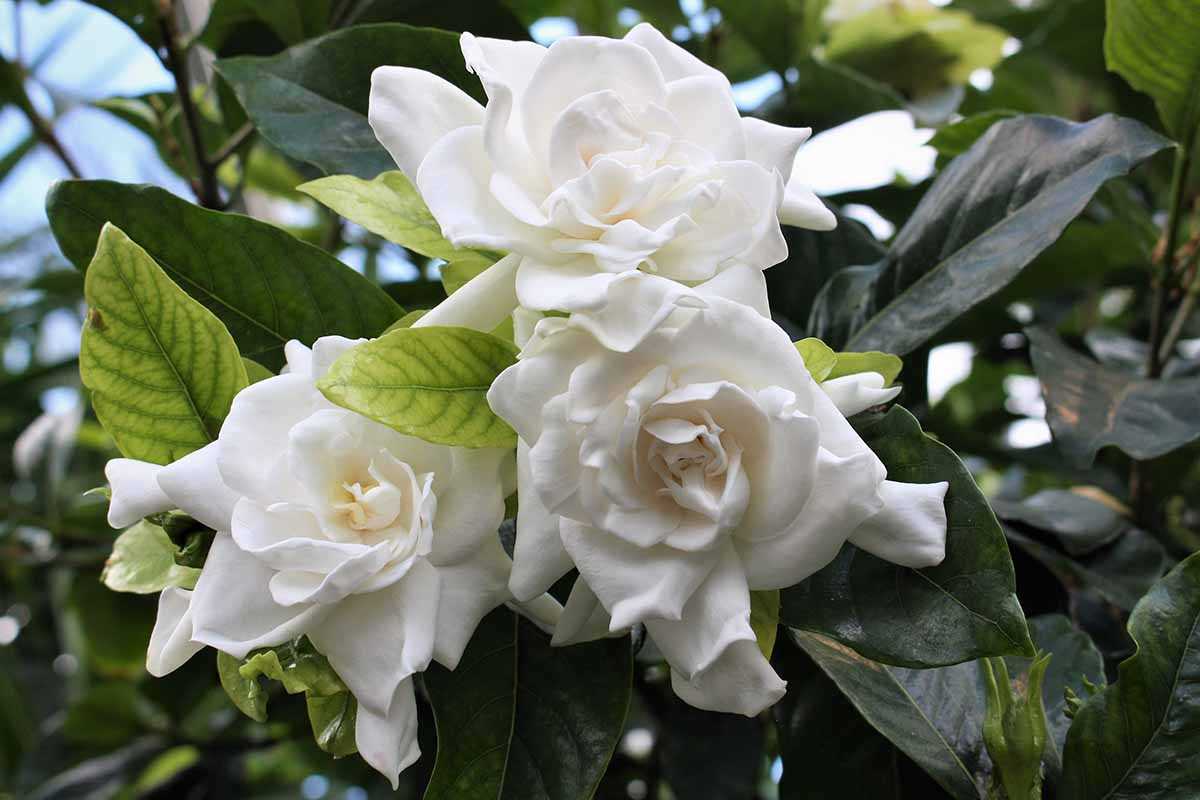
Leaf spot is another common disease that affects gardenias. It is caused by a fungus and appears as brown or black spots on the leaves. The spots may enlarge and cause the affected leaves to drop prematurely. Leaf spot is often caused by high humidity, overcrowding, or poor air circulation. To prevent leaf spot, make sure to give gardenias plenty of room to grow, avoid overhead watering, and remove any diseased leaves. Fungicides can also be used to treat leaf spot if necessary.
Black Sooty Mold

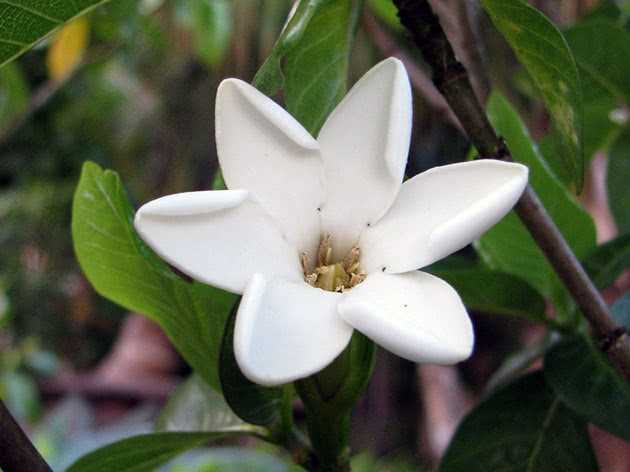
Black sooty mold is a fungal disease that can develop on the leaves and stems of gardenias. It appears as a black, sooty coating and is often accompanied by a sticky substance called honeydew. Black sooty mold is usually caused by an infestation of aphids, scale insects, or whiteflies. To control black sooty mold, it’s important to get rid of the underlying pest infestation. This can be done by using insecticides or by manually removing the pests from the plant.
Gardenia Varieties and Species
Gardenia plants come in a variety of species, each with its own unique characteristics. Here are some popular varieties of gardenia:
- Gardenia jasminoides: This is the most common species of gardenia, known for its beautiful white flowers and intoxicating fragrance.
- Gardenia radicans: This is a dwarf variety of gardenia, perfect for small gardens or containers. It has smaller leaves and flowers compared to other gardenia species.
- Gardenia augusta ‘Mystery’: This variety is known for its large double flowers and glossy green leaves. It is a popular choice for gardeners who want a showy display of flowers.
In addition to these varieties, there are also hybrid gardenia plants available in the market. These hybrids are often created to improve certain characteristics of the gardenia, such as flower size, fragrance, or disease resistance. Some popular hybrid gardenia varieties include:
- Gardenia ‘Crown Jewel’: This variety is known for its large, double white flowers and strong fragrance.
- Gardenia ‘Kleim’s Hardy’: This is a cold-hardy variety of gardenia, suitable for regions with harsh winters.
With so many varieties and hybrids to choose from, gardeners can find the perfect gardenia plant that fits their preferences and growing conditions. Whether you prefer a compact plant for containers or a showy display of flowers in your garden, there is a gardenia variety for everyone.
Gardenia Pruning Techniques
Pruning is an essential part of gardenia care and can help promote healthy growth and blooming. Here are some techniques to consider when pruning your gardenia plant:
1. Timing
It’s best to prune your gardenia plant in early spring, right after it has finished blooming. This allows the plant enough time to recover and produce new growth before the next blooming season.
2. Tools
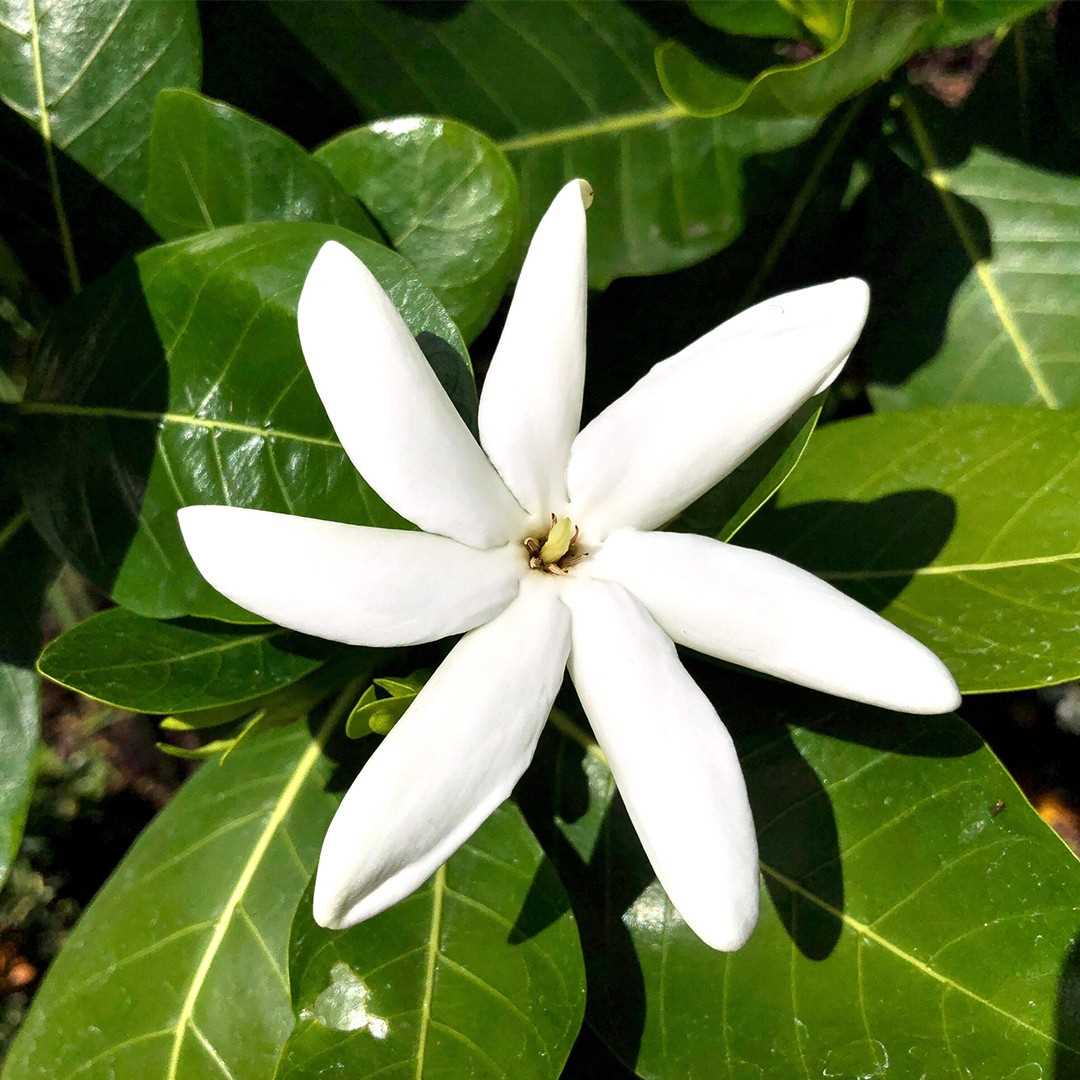

Use sharp and clean pruning shears or secateurs to make clean cuts. This helps prevent the spread of disease and ensures a smooth healing process.
3. Removing Dead or Diseased Wood
Start by inspecting your gardenia plant and look for any dead or diseased wood. Cut these branches back to healthy growth, making the cut just above a node or a leaf set.
4. Shaping and Size Control
If you want to shape your gardenia plant or control its size, you can selectively prune some of the branches. Cut back any excessive growth or branches that are crossing or rubbing against each other. Aim for an open and airy structure to promote better airflow and light penetration.
5. Pinching and Tipping
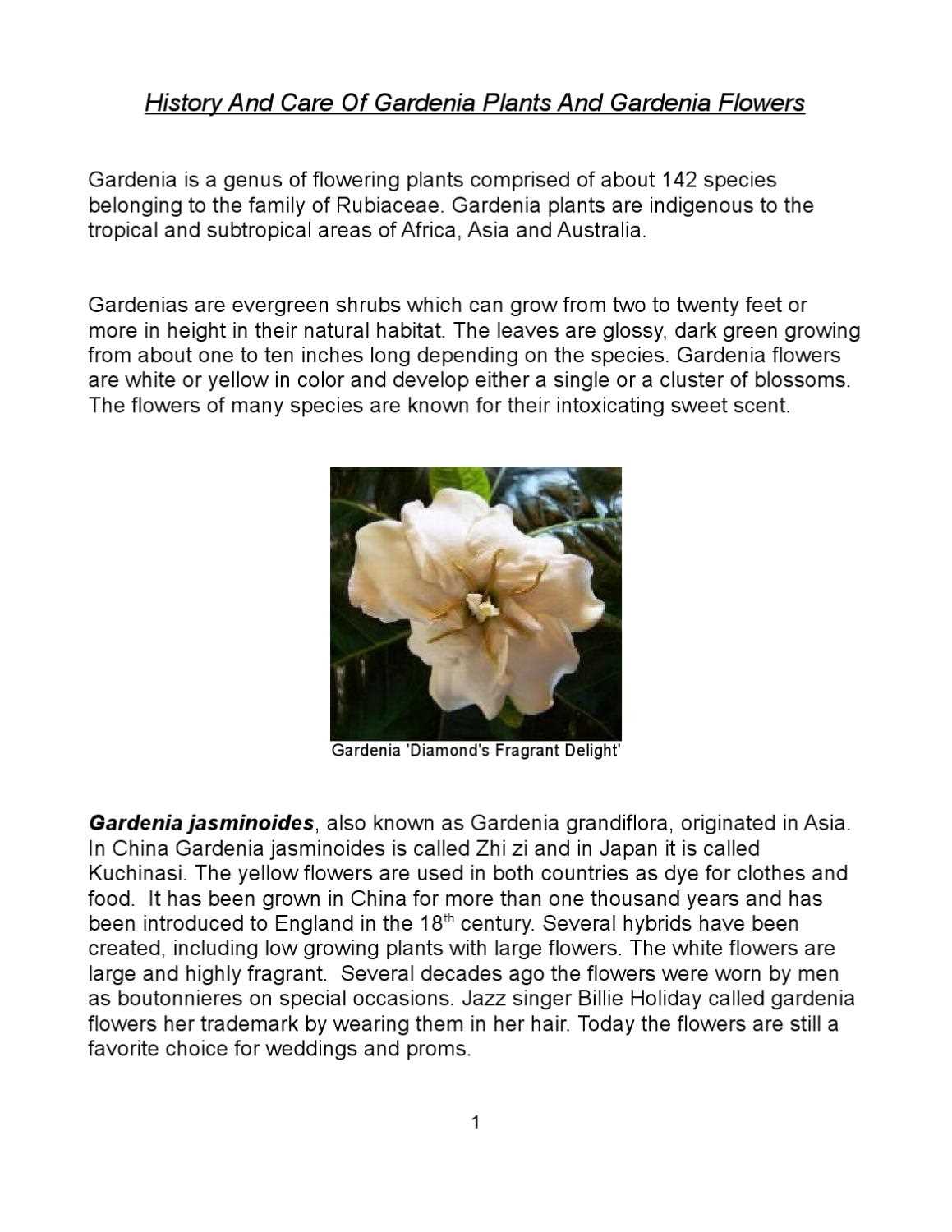

To encourage bushier growth, you can pinch or tip the new growth. Pinching involves removing the top portion of the new growth, cutting just above a leaf set. This promotes the development of lateral branches and a fuller, more compact plant.
6. Fading Flowers
Remove faded flowers regularly to keep your gardenia plant looking tidy. This not only improves the plant’s appearance but also prevents the formation of seed pods, allowing the plant to redirect its energy into producing new blooms.
7. Aftercare
After pruning, make sure to water your gardenia plant well and apply a balanced fertilizer to provide the necessary nutrients for new growth. Mulching around the base of the plant can also help conserve moisture and suppress weeds.
8. Additional Tips
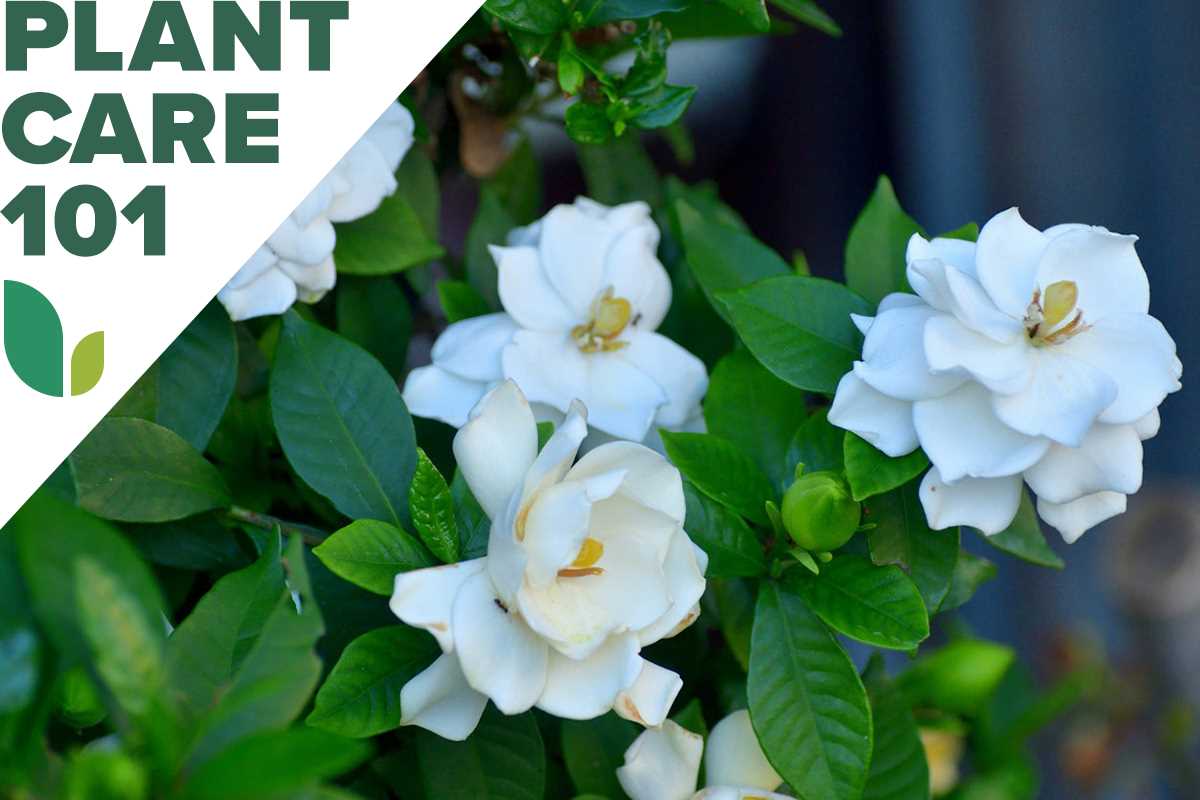

- Always clean your pruning tools before and after use to prevent the spread of disease.
- Avoid pruning your gardenia plant too late in the season, as this can reduce its ability to withstand winter cold.
- Don’t remove more than one-third of the plant’s height or volume during pruning, as this can stress the plant and reduce its blooming potential.
By following these pruning techniques, you can keep your gardenia plant healthy, promote better blooming, and maintain its desired shape and size.
Gardenia Propagation Methods
There are several methods for propagating gardenias, including:
- Seeds: Gardenias can be propagated from seeds, but this method is not commonly used as it can be challenging and time-consuming.
- Cuttings: Propagating gardenias from cuttings is the most common method. Take 4 to 5 inch stem cuttings from a healthy gardenia plant and remove the leaves from the bottom half. Dip the cut end in rooting hormone and plant it in a well-draining potting mix. Keep the cutting moist and warm until it roots, which usually takes 4 to 8 weeks.
- Air Layering: This propagation method involves making a shallow cut on a healthy gardenia branch and applying rooting hormone on the cut. Then, cover the cut with moist sphagnum moss and wrap it with plastic wrap. After a few weeks, roots will form, and the branch can be cut and planted.
- Grafting: Grafting is a more advanced propagation method and is typically done by experienced gardeners. It involves joining a gardenia cutting (the scion) with a compatible rootstock to create a new plant.
Each propagation method has its advantages and disadvantages, so choose the one that suits you best based on your skills and resources.
Q&A:
How often should I water my gardenia plant?
Gardenia plants should be watered regularly, typically once or twice a week. However, the exact frequency may vary depending on factors such as the climate, humidity levels, and the size of the pot or container. It is important to ensure that the soil is evenly moist but not waterlogged, as overwatering can lead to root rot.
What is the best soil for gardenia plants?
The best soil for gardenia plants is a well-draining, acidic soil with a pH level between 5.0 and 6.0. Gardenias prefer soil that is rich in organic matter, such as peat moss or compost. It is important to avoid heavy clay soils or soils with poor drainage, as these can lead to root rot.
How do I propagate gardenia plants?
Gardenia plants can be propagated through various methods, including stem cuttings, air layering, or by growing from seeds. One common method is to take stem cuttings from a healthy, mature gardenia plant and rooting them in a suitable rooting medium. It is important to provide the cuttings with a warm and humid environment to encourage rooting.
What are some common problems that gardenia plants face?
Some common problems that gardenia plants may face include yellowing leaves, leaf drop, bud drop, and sooty mold. These issues can be caused by various factors, such as over or under watering, poor drainage, nutrient deficiencies, pest infestations, or improper lighting conditions. Regular inspection and care, along with addressing any underlying issues, can help prevent and resolve these problems.
Can gardenia plants be grown indoors?
Yes, gardenia plants can be grown indoors. However, they require specific growing conditions to thrive, such as bright but indirect sunlight, warm temperatures, high humidity, and regular watering and fertilizing. Indoor gardenia plants may also benefit from periodic misting to increase humidity levels. Additionally, providing good air circulation and monitoring for pests are important for indoor gardenias.
Video:
ALL ABOUT GARDENIAS – Details about different varieties and how to grow Gardenias










